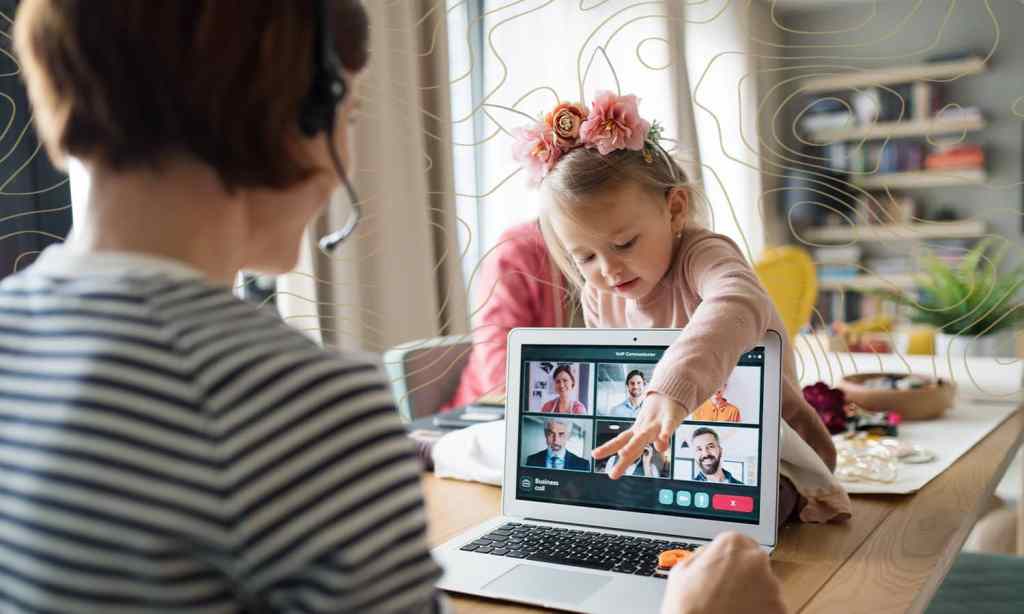During the pandemic, we’ve all had to adapt to new modes of working as COVID restrictions made traditional work from the office impossible.
Now, as the pandemic winds down and we look set to return slowly to normal life, the benefits and lessons of the past 18 months are beginning to shape how we might continue working in the future.
Gone are the days of the standard office 9-5. More companies, and even countries, are exploring the four day work week while many are quitting jobs that do not offer employees what they want in search of greener pastures.
A new study from Telstra has shown that the shake-up of traditional work is not over yet, with signs that ‘hybrid’ work — that’s working from home for part of the week — can offer clear benefits to parents — and is likely to stay.
“Work has become a thing you do, not a place you go,” the report reads.
Both employers and employees have found the shift to working from home surprisingly effective, banishing old myths that those who work from home are less likely to be productive than those who work in the office.
Somewhat counterintuitively, 22% of businesses who have adapted to offer a hybrid work model have actually seen increases in the productivity of their employees, while the study shows that they are 28% more likely to deliver new or innovative products and services.
Not only has the work been getting done, but employees have also been reporting increases in their mental health as a response to working from home. 54% of the employees surveyed said that they would value the flexibility of work more than a 5% pay rise.
However, some of the biggest changes and benefits are to those with children.
Hybrid work has been found to make employment and career development more accessible to women, who still do the majority of the housework and childcare in Australia.
The study found that women in relationships do 60% more unpaid work than men and that this is a significant barrier to increased female workforce participation.
Because of this discrepancy in the way housework and childcare are shared in Australia, the gender pay gap sits at 13.4%, with women earning an average of $242.20 per week less than men for the work they do.
Although things are changing, at the current rate, it would take 36 years to achieve economic gender equality in Australia.
That’s why Telstra is arguing that the opportunities provided by the pandemic need to be capitalised upon now to establish a more equitable future of work
Telstra CEO Andrew Penn has said that “We need to be bold, to not squander the opportunity to think differently, to not just recover but recover stronger by building more resilient, more digital, more future-ready organisations.
“We have a historic opportunity now to renew, revitalise and reimagine businesses fit for purpose in the digital age. It is a moment we must not waste”.
Through breaking down some of these barriers to traditional work, the report estimated that Australia would be able to generate an additional $18.3 billion in economic activity. It could also create 42,500 full-time jobs as those with disabilities, caregiving responsibilities, and regional postcodes are granted easier access to work.
Of course, the shift is not without issues of its own. 66% of employees still believe that they need further support with hardware or software in order to work effectively from home.
22% have also said that the working from home trend has meant that they find the boundaries between work and life become blurred, which can make it difficult for people to switch off.
However, 35% of businesses say that they will continue to experiment with hybrid working flexibility for their employees post-COVID, compared to just 19% pre-pandemic.
While issues around stress and workload are likely to lift as the pandemic eases, giving us greater separation from our jobs as we return to doing the things that we love, continuing to push for further experimentation in the way that we approach work may just be the key to strong economic recovery as we emerge from the COVID era.
“We’ve proven over the last 12 months that we don’t need to be working in the office together to innovate, let’s build on that experience and challenge ourselves further,” Penn said.
Read more stories from The Latch and subscribe to our email newsletter.







